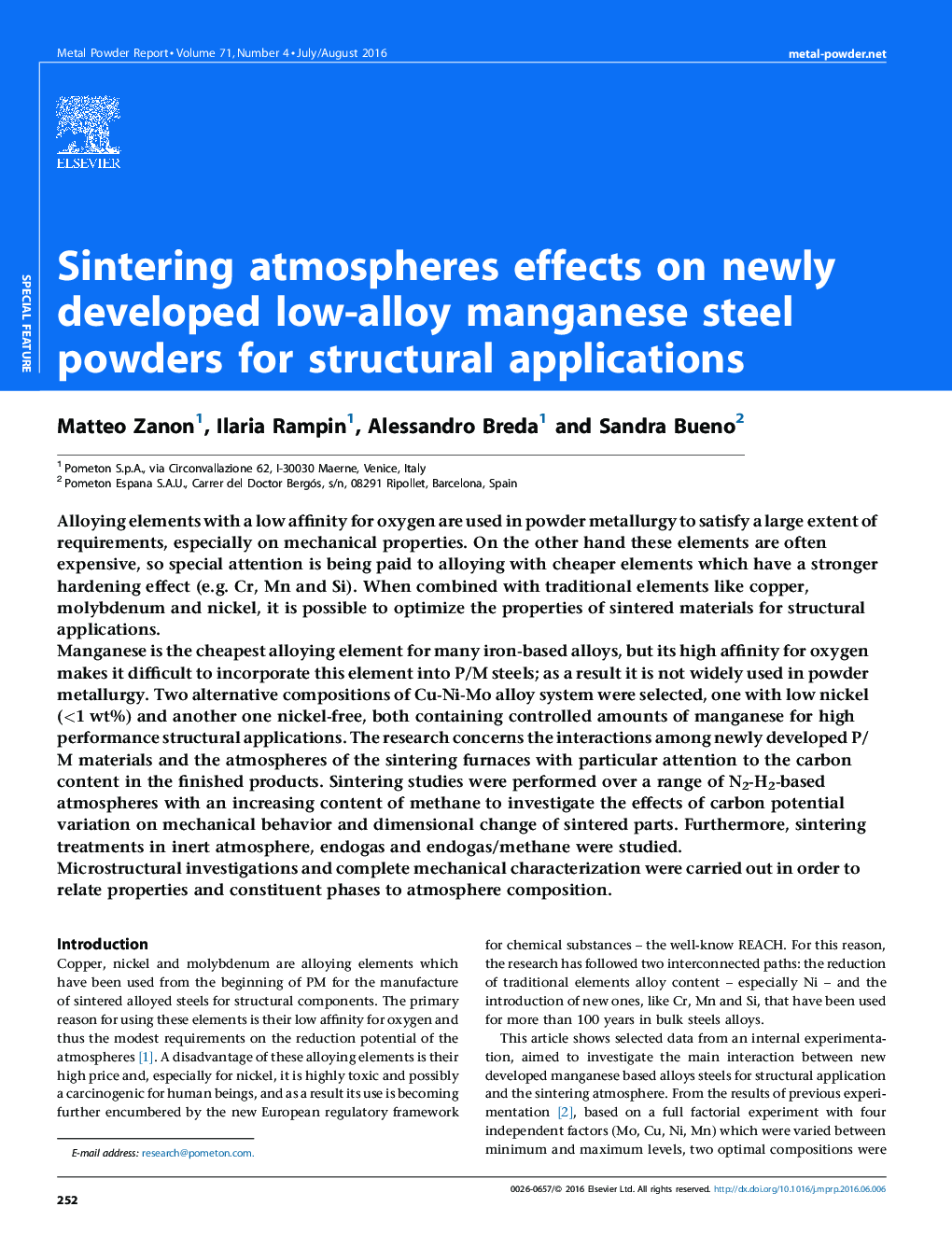| Article ID | Journal | Published Year | Pages | File Type |
|---|---|---|---|---|
| 1631323 | Metal Powder Report | 2016 | 6 Pages |
Alloying elements with a low affinity for oxygen are used in powder metallurgy to satisfy a large extent of requirements, especially on mechanical properties. On the other hand these elements are often expensive, so special attention is being paid to alloying with cheaper elements which have a stronger hardening effect (e.g. Cr, Mn and Si). When combined with traditional elements like copper, molybdenum and nickel, it is possible to optimize the properties of sintered materials for structural applications.Manganese is the cheapest alloying element for many iron-based alloys, but its high affinity for oxygen makes it difficult to incorporate this element into P/M steels; as a result it is not widely used in powder metallurgy. Two alternative compositions of Cu-Ni-Mo alloy system were selected, one with low nickel (<1 wt%) and another one nickel-free, both containing controlled amounts of manganese for high performance structural applications. The research concerns the interactions among newly developed P/M materials and the atmospheres of the sintering furnaces with particular attention to the carbon content in the finished products. Sintering studies were performed over a range of N2-H2-based atmospheres with an increasing content of methane to investigate the effects of carbon potential variation on mechanical behavior and dimensional change of sintered parts. Furthermore, sintering treatments in inert atmosphere, endogas and endogas/methane were studied.Microstructural investigations and complete mechanical characterization were carried out in order to relate properties and constituent phases to atmosphere composition.
